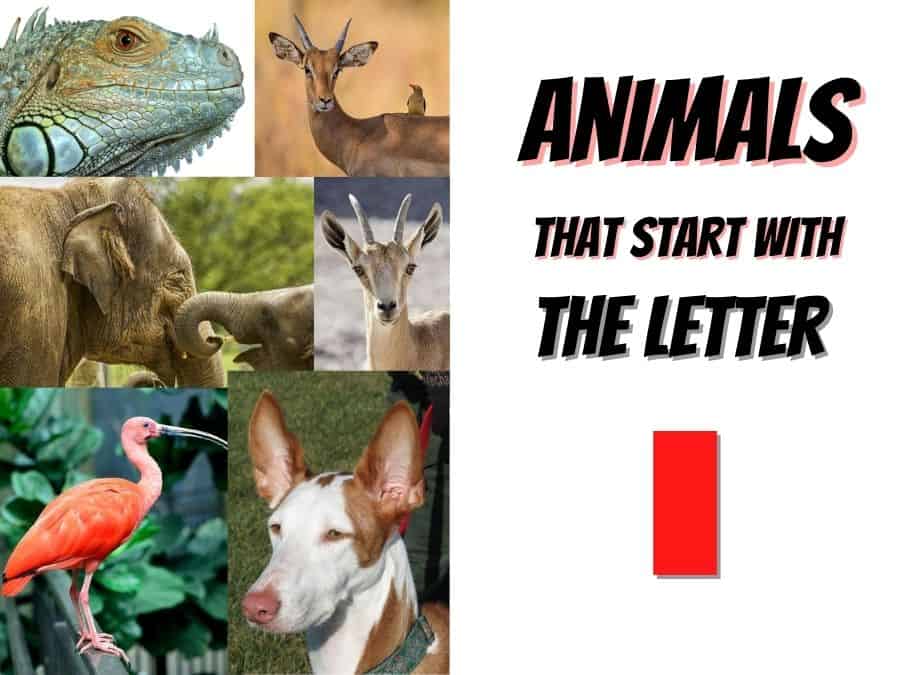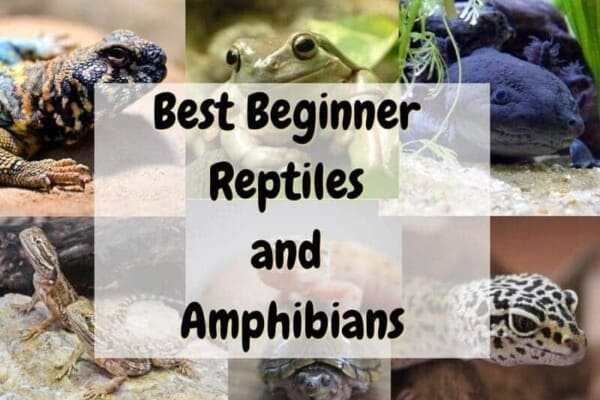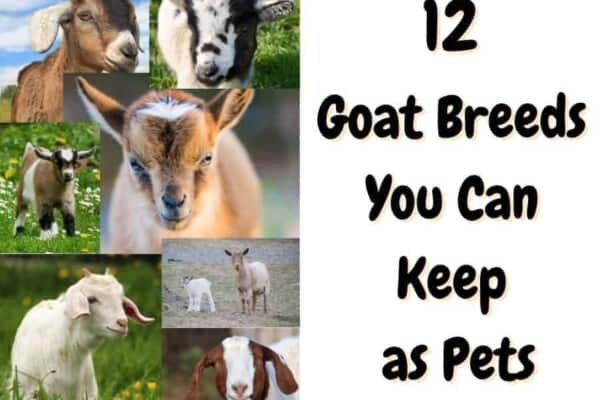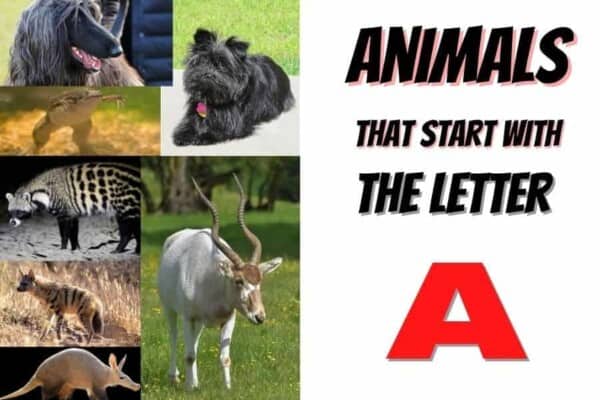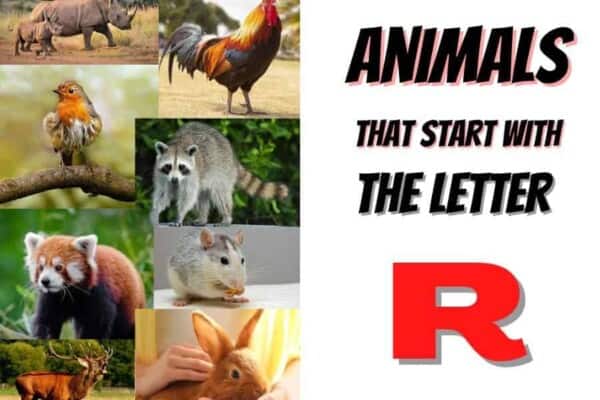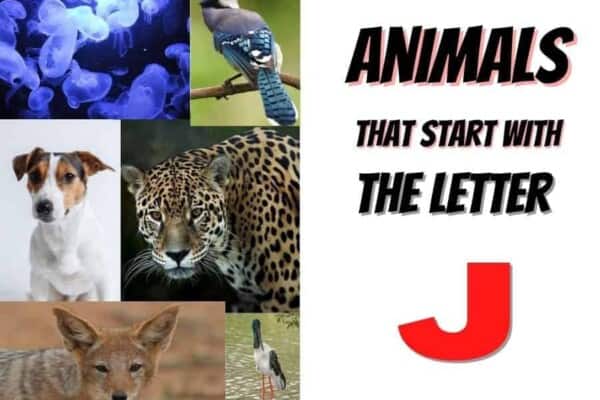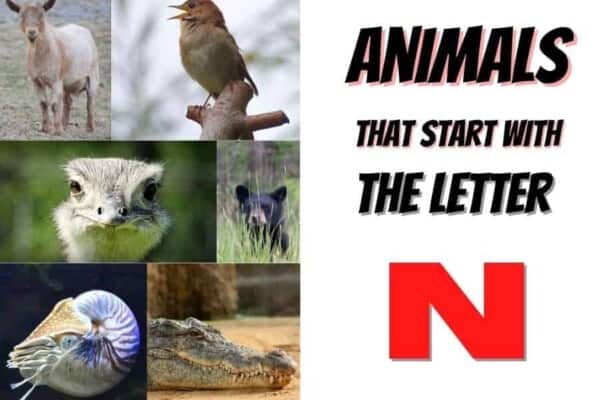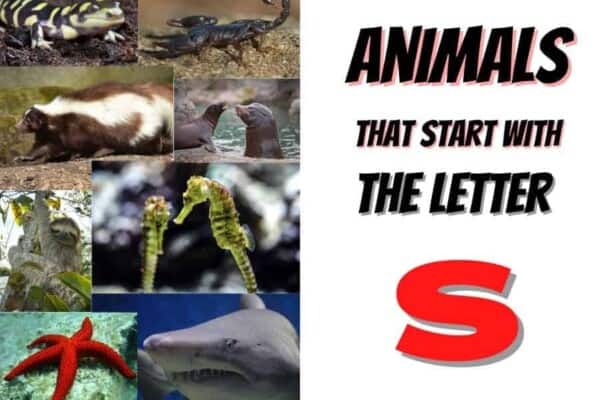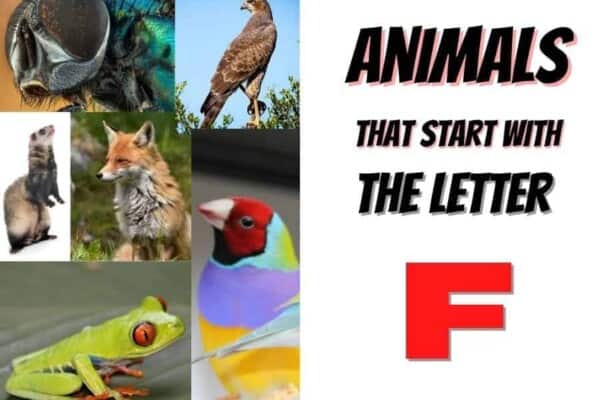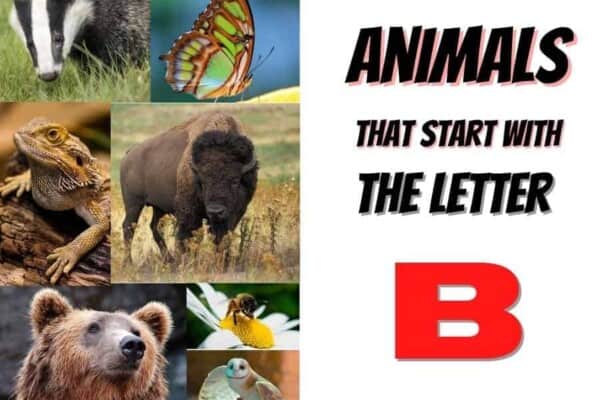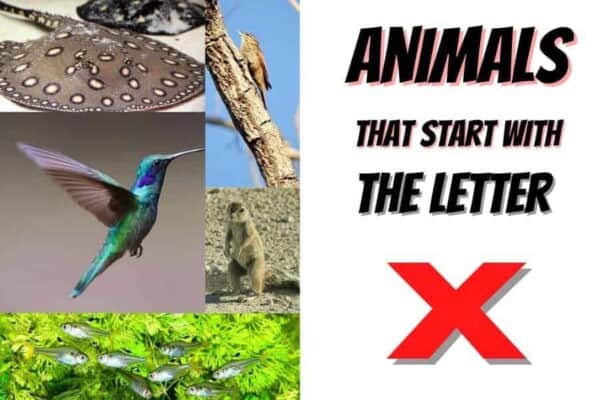Do you know what animals start with the letter I? We’ve gathered them all in this post so that you can have them all on one page – from the colorful iguana to the docile Indian elephant, right through to the ibis and the impala.
Without further ado, let’s get into the list of animals that start with the letter I.
Animals Starting With The Letter I – The Complete List
- Iberian Frog
- Ibex
- Ibis
- Ibizan Hound
- Icefish
- Iceland Gull
- Icelandic Sheepdog
- Icterine Warbler
- Idaho Ground Squirrel
- Idaho Pocket Gopher
- Iguana
- Immortal Jellyfish
- Impala
- Imperial Eagle
- Imperial Moth
- Inchworm
- Indian Bullfrog
- Indian Bush Rat
- Indian Cobra
- Indian Elephant
- Indian Flying Fox
- Indian Gazelle
- Indian Gerbil
- Indian Giant Squirrel
- Indian Hare
- Indian Palm Squirrel
- Indian Rhinoceros
- Indian Star Tortoise
- Indigo Snake
- Indochinese Tiger
- Indri
- Inland Taipan
- Insular Mole
- Inyo Shrew
- Iriomote Cat
- Irish Doodle
- Irish Setter
- Irish Terrier
- Irish Water Spaniel
- Irish Wolfhound
- Irukandji Jellyfish
- Island Gray Fox
- Island Mouse
- Isopod
- Italian Greyhound
- Italian Wall Lizard
- Italian Wolf
- Ivory Gull
- Ivory-billed woodpecker
Iberian Frog
The Iberian Frog lives in the Mediterranean and northern Sahara. It is not an actual frog but rather a neobatrach, a group of frogs that have lost their tadpole stage. It is now an adult amphibian that jumps from tree to tree.
Ibex
Ibex are long-horned wild goats. They live in rocky mountain areas from the Caucuses to southern Europe and North Africa. They have a red or brown body and white spots. The males have long horns that spiral to form a helix (whirlpool).
Ibis
The Ibis is found in European, African, and Asian wetlands. The birds have ample heads, short necks, and short bodies. The wings are long, and they are powerful fliers. The tail feathers are long and stream-like. They eat insects, nestlings, and their feathers.
Ibizan Hound
The Ibizan Hound is a long-coated black hound with tan spots. It is one of the oldest dogs still used today in the Iberian Peninsula, including Spain and Portugal; it may have originated there.
Icefish
Icefish are cold-water fish that live in the Arctic Ocean and Greenland. They have a round body and small eyes. There are several icefish species, but they all have the same features. Sometimes they make their homes under the snow or in the sea.
Iceland Gull
The Iceland Gull is a large bird found in northern Europe and Asia. It can weigh up to 8 pounds and has a square bill and black legs. They are sometimes called “seagulls” because they stick on large ships, but Iceland is not in the Arctic. They are migratory birds that travel across the oceans and summer in Iceland.
Icelandic Sheepdog
Icelandic Sheepdogs are one of the oldest sheepdogs dating back to ancient times. They look like small wolves, but they were explicitly bred to herd sheep, so they have certain qualities which make them effective sheepdogs.
Icterine Warbler
The Icterine Warbler is a migratory bird that lives in the forests of China and Japan. They are dark gray with black wings, gray legs, and a yellow chest. You can see them in the spring between March and May.
Idaho Ground Squirrel
The Idaho Ground Squirrel is a giant ground squirrel found mostly in western North America. They live anywhere from plains to forests, but they like dry habitats better than moist ones. They can live for about ten years, and the males are larger than the females.
Idaho Pocket Gopher
The Idaho Pocket Gopher is a ground-dwelling mammal that lives in dry arid areas of eastern North America. It has a long snout, large feet, and a large body. The color varies from gray to brown with black legs and front paws.
Iguana
The iguanas have survived in tropical areas on the islands of Central America for millions of years. They are herbivores but eat a variety of foods. They are the only lizards that can survive in cold weather without water for more than a few days. Iguanas weigh about 1.5 pounds.
Immortal Jellyfish
The immortal jellyfish is named so because it does not have any predators or parasites, unlike other jellyfish that die after a short time. The immortal jellyfish can live up to 30 years and have hundreds of tentacles spread out quite far.
Impala
Impalas are antelope-like mammals that live in Africa and the southern part of Asia. Their coats have white spots on a darker, tan background. They weigh about 1.4 to 1.8 m and weigh about 50 to 80 pounds.
Imperial Eagle
The Imperial Eagle is a large bird of prey found chiefly in parts of Europe and Asia. It eats small mammals, reptiles, and birds. It lives in an open country but avoids deserts and dense forests.
Imperial Moth
Imperial moths are a large group of moths found in North America. They have spotted wings and tan bodies with dark blue spots. The back end is light brown or gray. There are many species of Imperial moths, but they all have the same features.
Inchworm
Inchworms are caterpillars that look like they have inch-wide bodies when fully formed. They are called inchworms because they move forward by extending their body to the front, pulling it back, and repeating the process.
Indian Bullfrog
The Indian Bullfrog is found in India. It lives near large bodies of water, like rivers and lakes. They live in burrows under large rocks or small islands on the shore of a lake. They eat insects, small mammals, and other frogs.
Indian Bush Rat
These rats are found throughout India and Southeast Asia in densely populated areas. They live in burrows underground or in trees and feed primarily on fruit, seeds, nuts, and berries. Their diet gives them their name as they are thought to give off the odor of honeybees when they are agitated or disturbed.
Indian Cobra
The Indian cobra is a venomous snake that grows to about two meters in length. They are found throughout South Asia and are sometimes used for traditional medicine.
Indian Elephant
The Indian elephant is the largest living land animal, living in the wild in India, Nepal, Bhutan, and Pakistan. They live up to 70 years old and stand up to six meters tall at the shoulder when they are adults.
Indian Flying Fox
These bats have large wingspans of up to 8 feet, with a bat body only half as tall as their wingspan. They are the giant bats in the world and are found primarily in the forest of India.
Indian Gazelle
The Indian gazelle is a large antelope that lives throughout Africa and Asia. The males have long horns, while the females have shorter horns. They feed on leaves, flowers, and fruit when they are available. Otherwise, they will eat leaves, grass, and herbs instead. They can run as fast as 55 km per hour when they feel threatened.
Indian Gerbil
These rodents live throughout Pakistan, Kashmir, and northern India, mainly in arid or semi-arid regions where there is little water to drink from or too much grass to eat.
Indian Giant Squirrel
These squirrels are found throughout southern Asia and have the most prominent tail about the body size of all the squirrel species. They are very social animals living in family groups and will share food with other group members.
Indian Hair
The Indian hare is a member of the pig family found throughout southern Asia and parts of Africa. They are the most plentiful hares in their area, growing to an adult weight of about 6kg.
Indian Palm Squirrels
These squirrels live in tall palm trees, eating fruit, nuts, and bark and building nests for sleeping at night. Indian Palm Squirrels have not been taken into captivity and are rarely seen, so the reason for their small numbers is unknown.
Indian Rhinoceros
While they are found throughout India, Nepal, and Bhutan, they do not live in the wild in Sri Lanka or Bangladesh because there are too many people, causing too much disturbance for them to survive. They also go extinct at a rate of 1-3 per year due to poaching.
Indian Star Tortoise
An Indian star tortoise, also known as the star tortoise or blue-spotted star tortoise, is a medium-sized species of turtle found in the northern part of India. The species is listed as vulnerable due to habitat destruction and hunting.
Indigo Snake
The indigo snake is a small snake endemic to the southern United States, primarily in Florida and neighboring states. No subspecies currently exist. They have been documented ranging up to 30 inches in length but are typically less than 18 inches long. The body coloration consists of a light gray background with two distinct dark bands that run from head to tail (hence its name).
Indochinese Tiger
The Indochinese tiger, also known as Corbett’s tiger or Thailand tiger, is one of the most threatened tiger subspecies. In 2004, fewer than 250 mature individuals of this subspecies were left in the wild, and none in captivity. They live only in the protected areas of southeast Asia.
Indri
The indri is a prosimian primate and one of four living species in the genus “Propithecus.” Its classification has been controversial; it was initially placed in the lemur family and more recently considered a slender loris. It lives only on the island of Madagascar.
Insular Mole
The insular mole, also known as the Palau mole, is a burrowing mammal found only on Palau’s island. It lives underground and spends most of its time underground, except for brief periods it forages above ground. The total length of the specimens is about 26 cm (10 in), and it has large eyes and short limbs.
Iriomote Cat
The Iriomote cat is a large domestic cat native to the Iriomote National Park in Japan. It is most closely related to the Amami cat. The Iriomote cat was first described in 2002 as a new species based on mitochondrial DNA studies but was officially recognized by the Japanese government as a subspecies of the Japanese Bobtail in 2004. The Iriomote cat has only been found in its current range since 2003 and has been extirpated from much of its native range before that.
Irish Doodle
The Irish water spaniel or the Irish white terrier are two dogs bred to hunt waterfowl. The name “doodle” came from their original use in hunting waterfowl, especially the wood duck (“duck”) in Ireland and the United Kingdom.
Irish Setter
The Irish setter is a breed of dog that originated as a gundog. Originating in Ireland, it has become most associated with the United Kingdom and the United States. The breed is employed for bird hunting and can also be used to point and back other game bird species such as pheasants.
Irish Terrier
The Irish terrier (not to be confused with the Soft-coated Wheaten Terrier) is an extinct dog from Ireland used as a small war dog or hunting terrier. They were initially bred to hunt foxes and badgers, though they were also used to fight. The breed was lost shortly after its creation and is currently considered extinct.
Irish Water Spaniel
The Irish water spaniel is a breed of dog native to Ireland. They are often mistakenly called “Irish spaniels” but are rough-coated, primitive spaniels that may have connections to the Spanish Water Dog or possibly the Portuguese Water Dog. They are typically black and white and resemble the look of a miniature Newfoundland dog.
Irish Wolfhound
This gorgeous dog hails from Ireland and is one of the tallest breeds. Despite their size, Irish Wolfhounds are very gentle creatures. They have a life expectancy of about 12 years, but they’ve won half the battle if they make it past five years old.
Island Gray Fox.
These foxes live on several British islands, including the North and South Orkneys and the Hebrides. They’re also known as “Ice Foxes” in Germany and Japan. With a body temperature of 34 degrees Celsius, they certainly don’t require fur coats to stay warm.
Island Mouse.
The Island Mouse is one of two species in the genus Micromys. They are relatively small murine rodents found in Europe, the Middle East, and northern Africa. These little guys are unique because they’re not mice, but rather members of an entirely different family called Muridae; thus, Island Mice are technically rats with tails.
Isopod
This is a crustacean that is closely related to the common pillbug. They live in various marine habitats, but they can be found under rocks and logs just about anywhere. When they encounter predators, they roll themselves into a ball so that no part of their body is exposed, allowing them to survive without water for several years.
Italian Greyhound
Although these little dogs come from Italy, there’s nothing grey about them (except for maybe their hair color). They are also known as Italian Sighthounds and Wolfdogs, although both of the latter names are misleading since hounds can’t be classified as wolfdogs. Instead, they’re part of an entirely different group than the wolfdogs.
Italian Wall Lizard.
This little guy looks like a lizard, but his name is based on it being a wall lizard; other names include wall rat, rock lizard, and flat lizard. They can change color from grayish brown to brown to olive or even black during certain times of the year, although it’s not entirely known why this happens.
Italian Wolf
The Italian wolf is much smaller than other wolves found in Europe and Asia; however, they are still large enough to be dangerous. They aren’t related to wolves but rather part of the Canidae pack.
Ivory Gull
Around the mid-1700s, traders brought African ivory to Italy to create items like chopsticks and chess pieces. For some reason, it stuck in enough of the population that there’s now a whole species of seabirds known as Ivory Gulls; they’re named because they scavenge on dead African elephants to get food.
Ivory-billed Woodpecker
These amazing birds are native to Central and South America, although their range expands across North America thanks to human reforestation efforts. These woodpeckers are similar to other woodpeckers in that they use their bills for pecking; however, there’s no concrete answer as to why they’re unusual. Their populations are decreasing because of pollution
- Animals that start with A
- Animals that start with B
- Animals that start with C
- Animals that start with D
- Animals that start with E
- Animals that start with F
- Animals that start with G
- Animals that start with H
- Animals that start with J
- Animals that start with K
- Animals that start with L
- Animals that start with M
- Animals that start with N
- Animals that start with O
- Animals that start with P
- Animals that start with Q
- Animals that start with R
- Animals that start with S
- Animals that start with T
- Animals that start with U
- Animals that start with V
- Animals that start with W
- Animals that start with X
- Animals that start with Y
- Animals that start with Z

